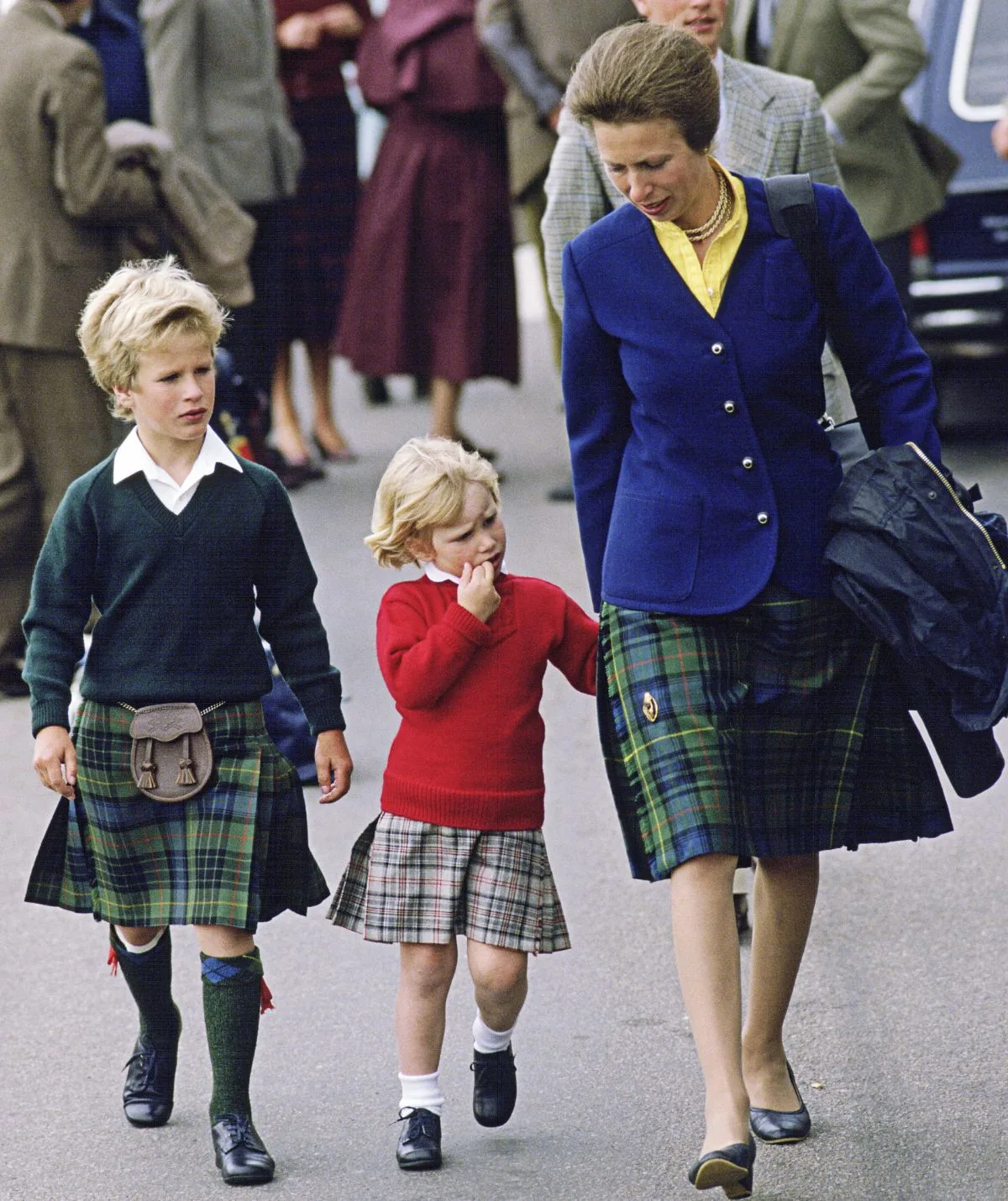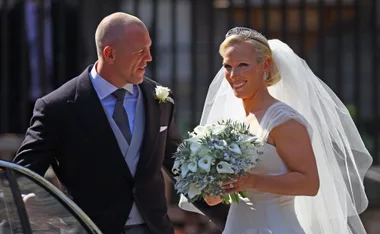There’s certainly a lot of discourse about the British royal family’s use (and lack thereof) of royal titles.
All of the members of the royal family have chosen differently for how their children are referred to, and Princess Anne opted not to give her children titles.
A centuries-old royal family tradition states that only the father may pass on his title, and only royal children with fathers in the direct line of succession may be referred to as princes and princesses.
Both of these rules meant that Zara Tindall and Peter Phillips were not officially entitled to royal titles.
It is customary that untitled men marrying into the royal family are offered an earldom, and Princess Anne’s first husband and the father of Zara and Peter, Captain Mark Phillips, was not a member of the royal family and also chose to decline the offer of an earldom from the late Queen.
Mark Phillips’ decline ultimately meant his children wouldn’t receive titles either.

Princess Anne chose not to give Zara & Peter titles.
(Getty) (Credit: (Getty))However, while Peter and Zara were not entitled to royal status by birth, the late Queen Elizabeth II extended a courtesy title to her daughter Anne’s children.
Anne chose to politely decline in the hope of providing a more normal childhood for her own children.
“I think it was probably easier for them, and I think most people would argue that there are downsides to having titles. So I think that was probably the right thing to do,” Princess Anne told Vanity Fair in 2020.
Zara Tindall has spoken out about her lack of royal title, revealing she’s grateful to have experienced a sense of normalcy in her life, especially during her childhood.
“From my point of view, I was obviously very lucky that my mother didn’t give us any titles so I really commend her on that. We were very lucky that we got to do it a bit our own way,” Zara told the Seven: Rob Burrow podcast in December 2023.

Prince Edward’s children are referred to as Lady Louise Windsor and James, Earl of Wessex.
(Getty) (Credit: (Getty))Due to the rule that royal children with fathers in the direct line of succession may be referred to as princes and princesses, Prince Andrew and now-King Charles’ children were entitled to royal titles, which both men decided to use.
Prince Andrew’s children are referred to as Princess Beatrice and Princess Eugenie, and King Charles’ children are known as Prince William and Prince Harry.
Queen Elizabeth and Prince Philip’s youngest son, Prince Edward, could also have given his children royal titles. However, he and his wife Sophie, Duchess of Edinburgh decided not to give Louise and James princess and prince titles.
Again, the rule that royal children with fathers in the direct line of succession may have titles meant that once King Charles III became monarch, his son, Prince Harry was able to give his children royal titles.
Prince Harry and his wife Meghan, Duchess of Sussex have ultimately decided to use Archie and Lilibet’s prince and princess titles.

George, Louis and Charlotte are princes and a princess.
(Getty) (Credit: (Getty))Prince William’s children, George, Charlotte and Louis’ titles worked a little bit differently.
Following the birth of Prince George in 2013, the late Queen made a decision to change an old monarchy law that meant not only George as the heir to the throne would become a prince, but his future siblings (Charlotte and Louis) would also be given royal titles.
King George V introduced new guidelines in 1917 that determined who was too far down the line of succession to qualify for a royal title. He decided that all children of the monarch and all firstborn male grandchildren would automatically become princes.
Queen Elizabeth II changed this law to ensure that Princess Charlotte was also given a royal title and included in the line of succession after George, regardless of her gender.
Thanks to this change, Prince Louis was also given a royal title. If the late Queen had not introduced this modification, Louis wouldn’t have been referred to as a prince, but would have been known as Lord Louis.
To read more about how titles work within the British royal family, click here.


